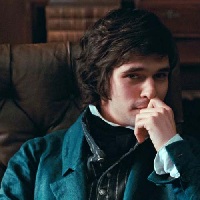Somebody's Got No Glass Summer 74 512 AV  Montaine was happy. He was rarely unhappy, but when he had a full work day ahead it wasn’t all that common for him to be anything more than tolerably content either. But today he was positively joyous. There were no urgent shipments, no outstanding orders, no dire shortages of windows or glasses or any of the many mundane objects he so often was called to make, and as such he had the freedom of the workshop for the day. He could make what he liked, and he knew just what he would like to make. When he was free to work on his own pieces, without the restrictions of Calbert’s instruction, he gravitated naturally towards one area: figurines. Figurines had little use. They had no functionality, no purpose beyond simply existing. People used them as decoration, or paperweights, or for whatever use one might have for what was, in truth, essentially a glorified hunk of glass. And while Monty generally deplored the useless, those who did not work or sought to live the easy life, living on the labours of others, his opinion of useless glass was rather different. When he made a window, the purpose of that act, that act of creation, was to make an object to fulfil the purpose of permitting light yet not air through a cavity in a wall. When he made a vase, the purpose of that act was to make an object to fulfil the purpose of holding a liquid or pourable material. It was not about the glass, but the end result. When Monty made a figurine, that act of creation was the purpose. To create something beautiful, to create something useless, with no purpose beyond its own existence, beyond its own creation, that was glasswork in its purest form. The purpose of a figurine was to display the beauty of glass, the beauty of glasswork. Banden held the hatch open on the batch oven as Monty slipped his pipe into the burning heart of the furnace. Fogle had been finding it more and more difficult to persuade his parents to permit him to leave the relative safety of their family home and enter the city proper, what with the rumours of disease spreading like wildfire. Mory and Banden had disregarded such gossip as simply being a part of Zeltiva’s standard famine cycle, but the curmudgeonly, old Mory had been sniffing an awful lot of late and hadn’t turned up to work at all that day. Monty closed an eye and watched for the reflection of the pipe on the molten glass. When he spotted it he carefully gathered a small amount and pulled the tool out, allowing Banden to close the hatch. The dollop of vibrant, scarlet material was roughly the size of his balled fist and was beginning to droop downwards towards the workshop floor. Monty spun the pipe in his hand, to allow the tendril that had formed to rejoin the rest of the glass and pressed his lips to the end, and blew. The ball extended outwards, growing, and paling as it did so. He reached out a hand to find his jacks on the old stone marver and used them to manipulate the glass into a longer, more tubular shape. When he was satisfied with the length he slid his hand along the pipe and brought the blistering piece closer. With one hand holding the pipe steady and the other clutching his jacks, he gripped the tube some two thirds of the way along and ran the jacks slowly down, towards the pipe, squeezing softly. He repeated this movement, causing the glass to taper very gently along its length, bulging outwards at far end. Next, Monty returned his jacks to the marver and picked up his shears, grasping the far end and teasing it, tugging out two little ears. He moved down the piece and tugged out four little tendrils that would become legs and then picked up his jacks once more. The labour was delicate, but due to the nature of the material he was working with he had to move quickly. If the glass cooled too swiftly, the entire piece could be ruined. He used the jacks to smooth the shape of the glass near the protrusions he had formed and subtly shaped the ends of them into little feet, running the points of the tool down the very tips to define the toes. He then returned once more to his shears and broke the little figurine off of the pipe and placed it down on the marver, handing the pipe over to Banden in one movement. As the glass hit the coolness of the stone it rapidly lost some of its lustre, he had to be fast. He used his shears to grip the back end of the piece and pulled out a long tail, curling it round so that it stood proud and curved above the main body. He smoothed the glass down where it had been weakened by the process, near the base of the tail, and set to work on the smaller details. The face was always the trickiest. To make such fine detail with such clunky tools in such resistant materials in such a short amount of time, these things required a great amount of practice and experience to pull off well. Fortunately he had both in spades. Holding just one of the two pointed ends of his jacks between the thumb and forefinger of his right hand, and balancing the tool with his left, he began to carve out the figurine’s feline features. The task required a steady hand and steadier mind. If he panicked and made a mistake there would not be time to remedy it before the glass became too cool and risked cracking. He was lucky, and skilled, enough to make the face without error, and, using the jacks, lifted the piece up off the marver and placed it into the annealer to cool. Monty sighed with relief and sat down on the little wooden chair propped up the by the oven. Yes, figurines were so much more interesting than windows. |
- Getting Started
- Help
- Master Lists
- Useful Links
- Features
Somebody's Got No Glass [Hadrian|Montaine]
Wherein a lecture on the wonders of summoning is repaid with a demonstration of window making.
(This is a thread from Mizahar's fantasy role playing forum. Why don't you register today? This message is not shown when you are logged in. Come roleplay with us, it's fun!)
6 posts • Page 1 of 1
-

Montaine - The Glass Boy
- Posts: 399
- Words: 306099
- Joined roleplay: April 6th, 2012, 9:23 pm
- Location: Zeltiva
- Race: Human
- Character sheet
- Storyteller secrets
- Scrapbook
- Plotnotes
- Medals: 2
-


-

Hadrian - Most smartest and best damn tapper.
- Posts: 2498
- Words: 1050304
- Joined roleplay: March 21st, 2010, 6:50 pm
- Location: Wandering
- Race: Human
- Character sheet
- Storyteller secrets
- Medals: 3
-


-

-

Montaine - The Glass Boy
- Posts: 399
- Words: 306099
- Joined roleplay: April 6th, 2012, 9:23 pm
- Location: Zeltiva
- Race: Human
- Character sheet
- Storyteller secrets
- Scrapbook
- Plotnotes
- Medals: 2
-


-

Hadrian - Most smartest and best damn tapper.
- Posts: 2498
- Words: 1050304
- Joined roleplay: March 21st, 2010, 6:50 pm
- Location: Wandering
- Race: Human
- Character sheet
- Storyteller secrets
- Medals: 3
-


-

-

Montaine - The Glass Boy
- Posts: 399
- Words: 306099
- Joined roleplay: April 6th, 2012, 9:23 pm
- Location: Zeltiva
- Race: Human
- Character sheet
- Storyteller secrets
- Scrapbook
- Plotnotes
- Medals: 2
-


-

Hadrian - Most smartest and best damn tapper.
- Posts: 2498
- Words: 1050304
- Joined roleplay: March 21st, 2010, 6:50 pm
- Location: Wandering
- Race: Human
- Character sheet
- Storyteller secrets
- Medals: 3
-


-

6 posts • Page 1 of 1
Who is online
Users browsing this forum: No registered users and 0 guests
